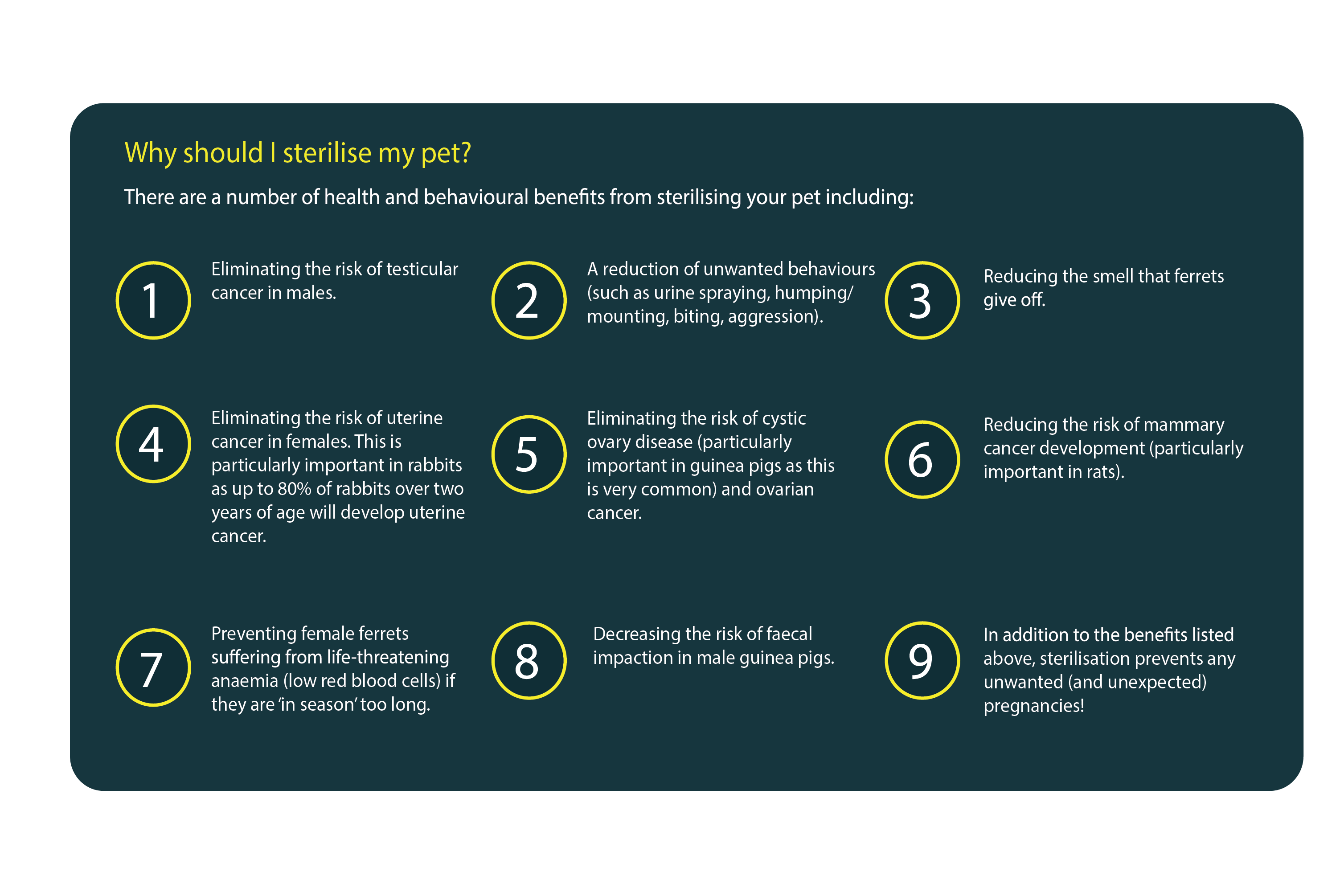Sterilisation in small animals
What is sterilisation?
Sterilisation is the term commonly used for when pets have surgery to remove part of their reproductive tract, making them unable to breed. Most cats and dogs are sterilised, however, in smaller pet mammal species, such as rabbits, guinea pigs, rats and ferrets, it is often overlooked. Today’s article will cover why it is just as important that your smaller pets are sterilised too!
What are the different types of sterilisation?
The most common form of sterilisation is when an animal undergoes surgery to remove part of their reproductive tract. There are also medical forms of temporary sterilisation that involve hormonal injections or implants, however, these will not be covered in this article. Castration is the term used when sterilising a male animal and involves the removal of the testicles. Spey is the term commonly used when sterilising a female animal and generally involves the removal of the ovaries and uterus. In general, either surgery is a day procedure where your pet is dropped off to the veterinary clinic in the morning, has surgery during the day and then goes home that afternoon or evening. Recommended sterilisation ages vary with species but can be performed as early as 3 months of age in some cases.

If you would like any further information about sterilisations, get in touch with your local exotics veterinary clinic or contact Dr James at vets@unusualpetvets.com.au
